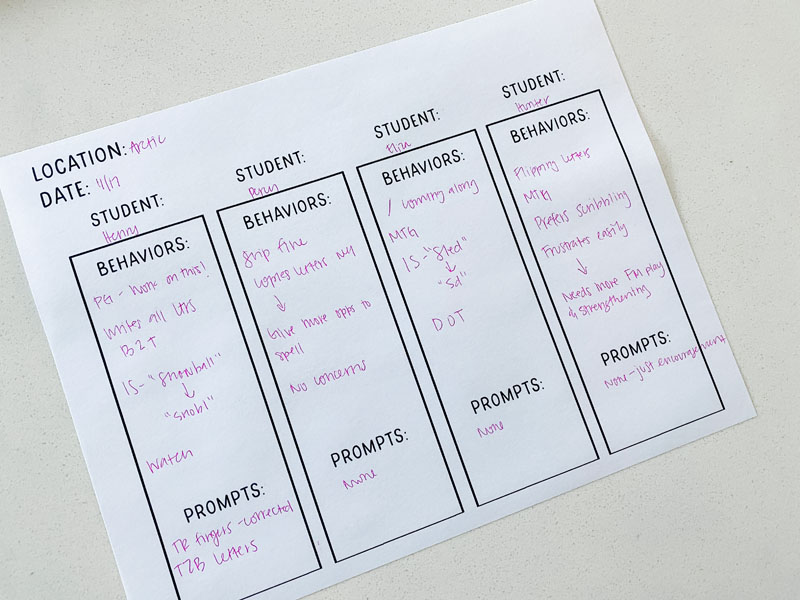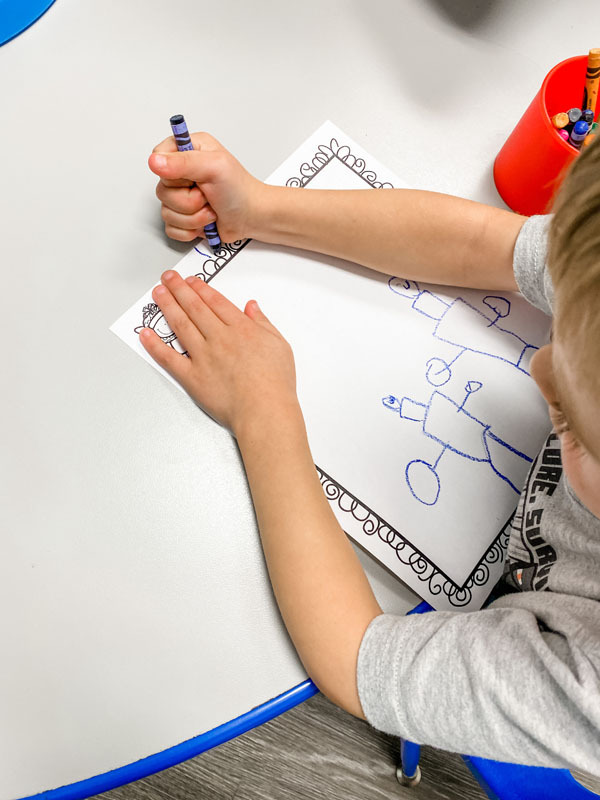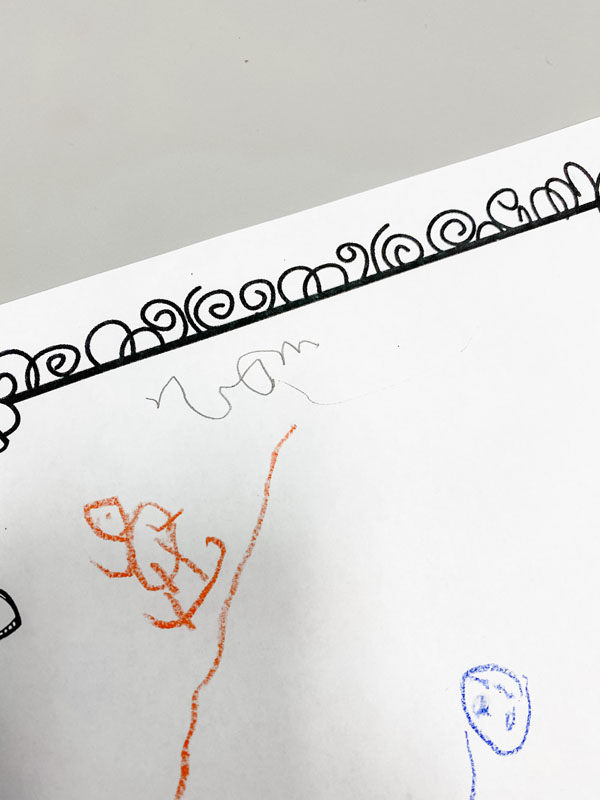I recently shared on Instagram some thoughts on the importance of formative assessment and even offered a data-sheet freebie in my Resource Library. It is SUCH a valuable tool for teachers to use in the classroom because it gives you ongoing information about how effective your teaching is. It’s a perfect source to turn to when developing curriculum and writing lesson plans. It is the perfect way to document the progress your students make over the course of the school year. Unlike benchmark assessments, they show a child’s knowledge in action in a variety of settings and activities.
In spite of its value, assessment of any kind can become overwhelming for teachers who are not yet comfortable with it. I remember being a brand new special education teacher trying to accurately assess students being screened with standardized tests. These assessments had to be administered exactly as written or they were not considered reliable. I would fumbled through the wording, try to keep the toys used for the assessment in order and easily accessible, try to not lose my place on the score sheet, feel the parent breathing down my neck, all while trying to keep the attention of a very young child. It was SO hard. But, with practice, I got better. And by the time I left that first job, I could practically administer those assessments in my sleep.
Thankfully, most preschool teachers will never had to administer a rigid, standardized test to their students. Formative assessment is so much more flexible and can be adjusted and adapted to fit any situation. The following components make up a good formative assessment:
- Observation
- Formative assessments rely on teachers being observers. Most teachers in play-based classrooms already feel at ease being an observer because they are in the habit of letting children explore and learn on their own. Play provides the perfect opportunity to collect loads of observational assessment, so take advantage of it!
- Setting Aside Bias
- Bias is universal and something we all fall prey to at times. In order to truly see what a child knows and is capable of, it is crucial to set aside any bias we have about a student. Take a step back and consider whether the words we use to describe a child contain any bias pertaining to their race, gender, culture, family background, or religion.
- Figuring Out A System
- This will take some trial and error. Keep a clipboard with data sheets, a notebook, or sticky notes handy to jot down observations.
- Digital resources are more plentiful now than ever. There are many options available if taking data digitally appeals to you.
- Some methods require consolidation at the end of the day. Others are easy to interpret at a glance. Personal preference will be a big determining factor here–if it isn’t easy for you to use, you won’t use it.
- Recording Specifics
- “Sarah stays engaged in tasks” is far too general a statement to be useful in an assessment. Avoid the use of vague descriptions–you won’t remember later what the task was or in what way the student behaved.
- “Sarah interacted with paper and pencil for more than 5 minutes. She used a modified tripod grip. She shows an understanding of print by moving left to right on the page. She used inventive spelling to write ‘hlo can yu pla’ on the page”
- Creating Shortcuts
- The specific example in the previous slide gives enough information to be helpful–but who has time to write all of that for every observation you make? Creating shortcuts will be a huge help in jotting down actionable notes without taking too much time. For example:
Sarah–WC–5+min–MTG–R2L–ISp” equates to “Sarah, Writing Center, engaged for 5+ minutes, modified tripod grip, writes right to left, invented spelling”
- Taking Pictures or Collecting Work
- In the example with Sarah, you might take a picture of what she wrote at the writing center or collect sample if she leaves her writing behind. Being able to attach any relevant work to your notes is an added bonus to your assessment. If you compile your assessments digitally, adding a picture from your phone is a snap!
- Focusing on Positives
- While it can be helpful to note areas where a child might need more support, maintaining positive language in your assessments will help you plan around a student’s strengths rather than their weaknesses. Observing “Sarah counted 7 blocks independently and she needed prompting to finish counting to 10” gives you specific information about what Sarah can do, while providing information about where she needs help.
- Reflecting
- Reflection is key in order for formative assessment to be “ongoing, strategic, and purposeful” (Copple & Bredekamp 2009, 22)
- Once you discover a method that works well for you, reflecting on the information you gather about your students will provide valuable insights on how to cater your instruction to their individual needs.
Here are some of my own data sheets from recent formative assessment I completed in my classroom. They all capture different types of information, but all are very valuable in helping me know where the gaps in my teaching are, where my students need extra support, and what areas they are excelling in.
Academic Tracking

This first data sheet is one that I keep and use for 3-month blocks of time—beginning, middle, and end of the school year.
I don’t prefer to do a lot of direct instruction with letter names and sounds, but I do want to know how effective my embedded approach to teaching them is working, so I take observational data any time a letter sound or name comes up in our activities.
At the beginning of the year, our center does this as a formal benchmark assessment, marking knowledge as a yes or no…mid-year and beyond, I use M (match), P (point), and N (name) to give me more specific information about where each student is in the learning process.
Small Block Data

The data sheet is one dedicated to a single student who also attends a special ed preschool two days a week. I’m collaborating with that teacher to work on his goals the three days he spends with me.
This sheet is similar to the block sheet I offer as a freebie except that it doesn’t cover multiple domains—it tracks data for one particular skill across the entire day in accordance with one of his IEP goals.
I generally take the time to write more specific notes in each box because it is being used for more than just my information—it will be given to his special ed teacher to include in his goal progress.
Location-Based

This last data sheet is the location assessment from my Resource Library. I like to choose one location a week that I try to gather data at for each student—so, each day I will assess 3 or 4 kids and by the end of the week I have data for the whole class. Of the three data sheets shown here, I use the most shorthand on this one.
The week this data was taken I was focusing on areas of the classroom where writing takes place. I was able to collect samples from several students and took pictures of work from others. I don’t stress over pencil grip *too* much in preschool, but I do offer prompts to help encourage a better grip. I also offer prompts to guide children in proper letter formation, such as when they are writing a letter from bottom to top. Here are some examples of pictures I collect to accompany this data:




How comfortable are you with formative assessment in your classroom? Is it something you feel like you’ve mastered, or does the thought of it overwhelm you? What resources do you think would help you get the most out of it?